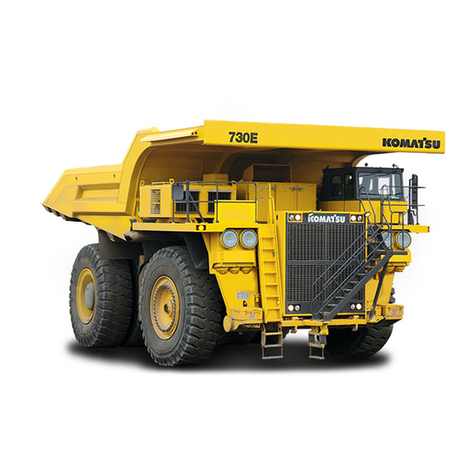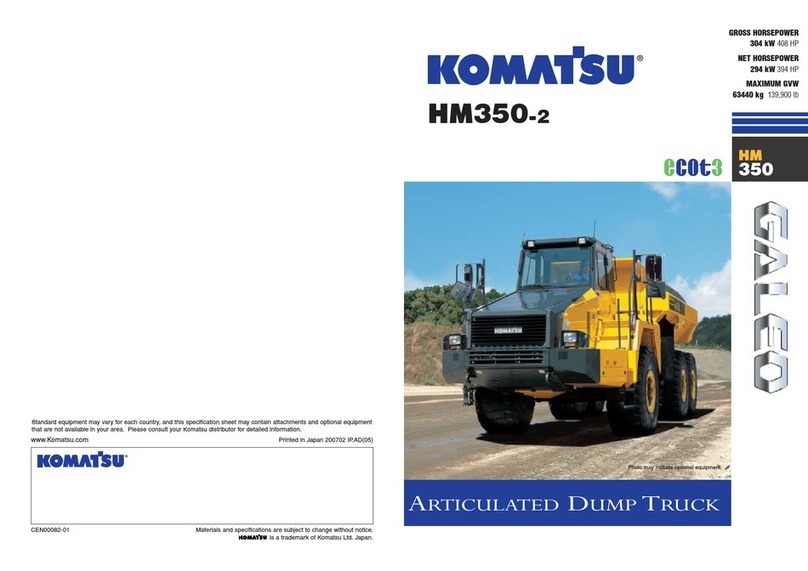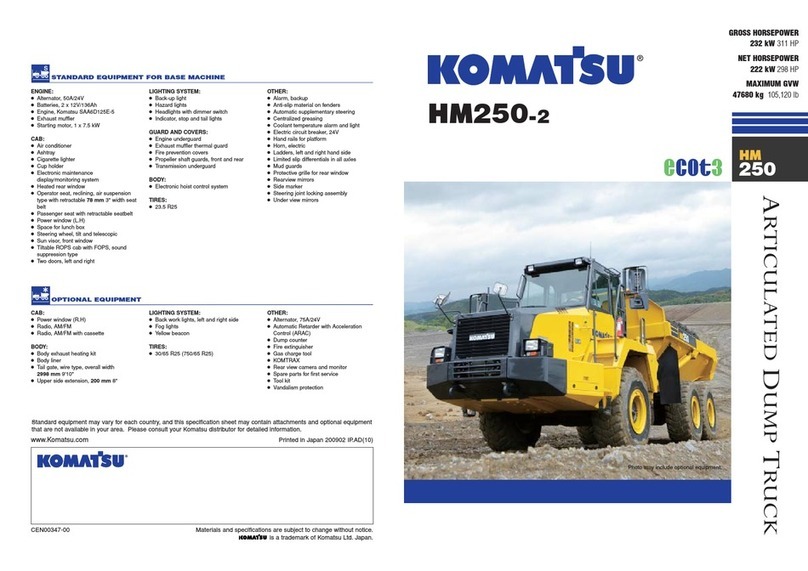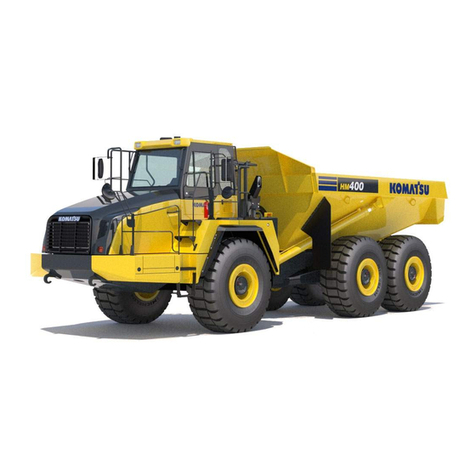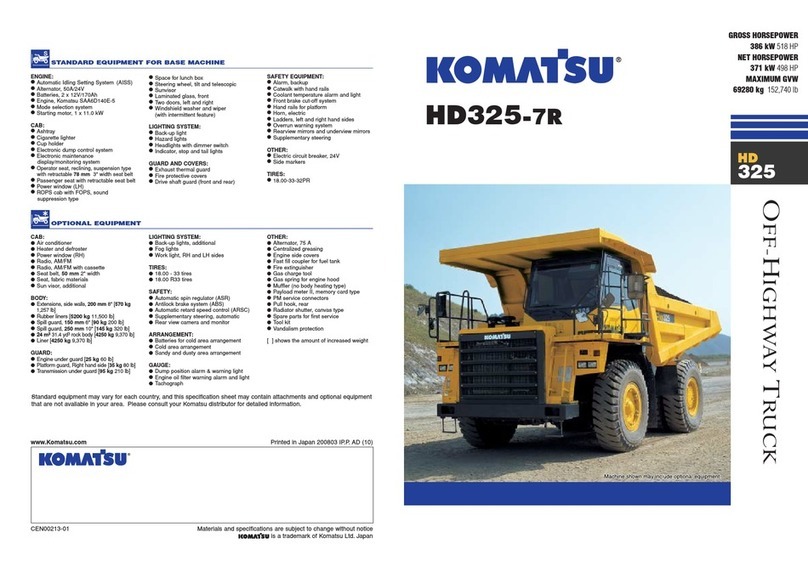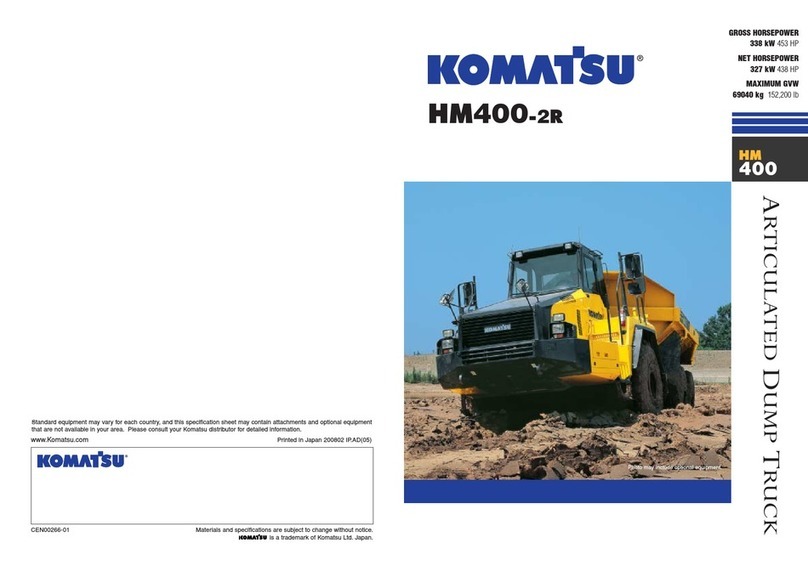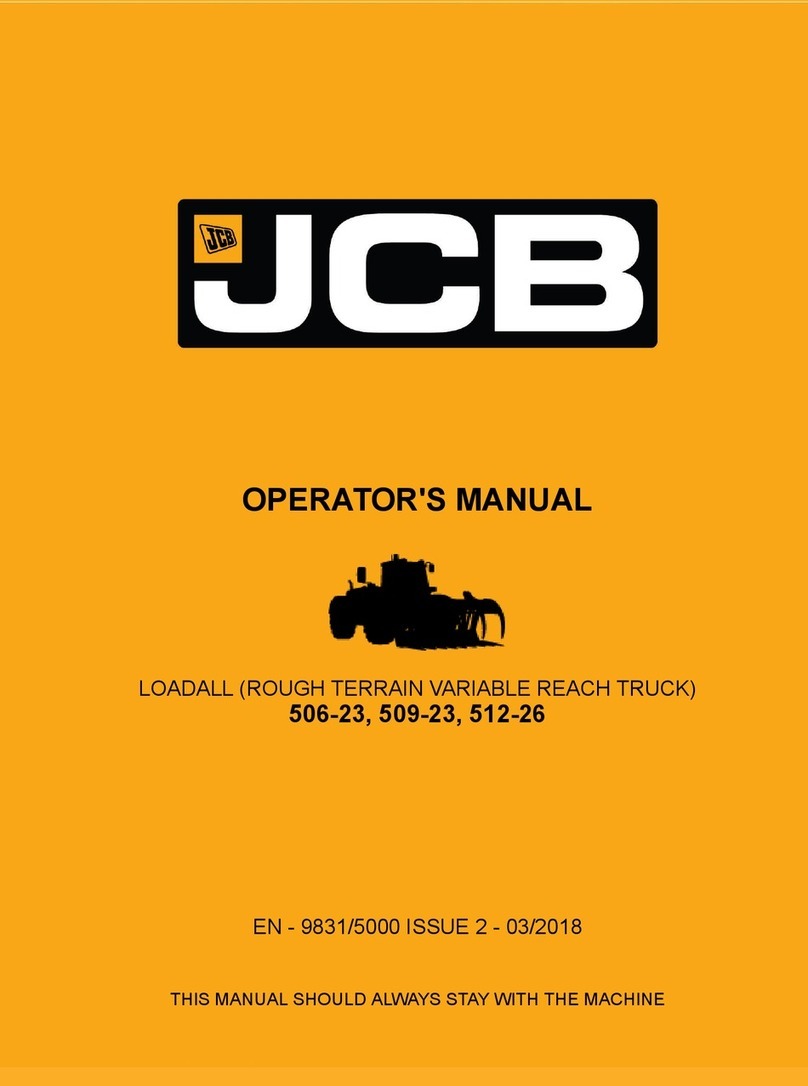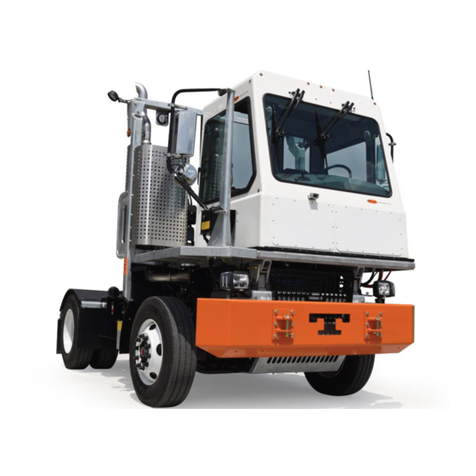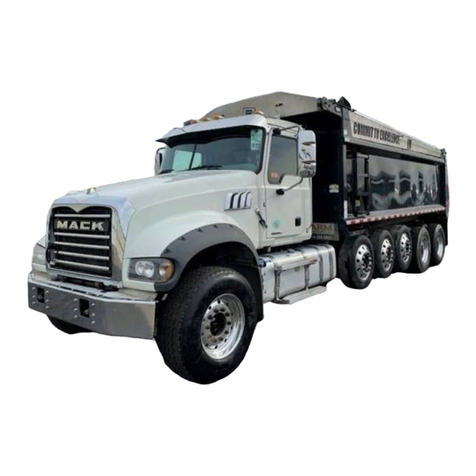
FOREWORD
This Shop Manual is written for use by the service technician and is designed to help the technician
become fully knowledgeable of the truck and all its systems in order to keep it running and in
production. All maintenance personnel should read and understand the materials in this manual
before performing maintenance and/or operational checks on the truck. All safety notices, warnings
and cautions should be understood and followed when accomplishing repairs on the truck.
The first section covers component descriptions, truck specifications and safe work practices, as well
as other general information. The major portion of the manual pertains to disassembly, service and
reassembly. Each major serviceable area is dealt with individually. For example: The disassembly,
service and reassembly of the radiator group is discussed as a unit. The same is true of the engine
and engine accessories, and so on through the entire mechanical detail of the truck. Disassembly
should be carried only as far as necessary to accomplish needed repairs.
The illustrations used in this manual are, at times, typical of the component shown and may not
necessarily depict a specific model.
This manual shows dimensioning of U.S. standard and metric (SI) units throughout and all references
to “Right”, “Left”, “Front”, or “Rear” are made with respect to the operator’s normal seated position,
unless specifically stated otherwise.
Standard torque requirements are shown in torque charts in the general information section and
individual torques are provided in the text in bold face type, such as 100 ft.lbs. (135 N.m) torque. All
torque specifications have ± 10% tolerance unless otherwise specified.
A Product Identification plate is normally located on the truck frame in front of the right side front
wheel and designates the Truck Model Number, Product Identification Number (vehicle serial
number), and Maximum G.V.W. (Gross Vehicle Weight) rating.
The KOMATSU Truck Model designation consists of three numbers and one letter (i.e. 930E). The
three numbers represent the basic truck model. The letter “M” designates a Mechanical drive and the
letter “E” designates an Electrical propulsion system.
The Product Identification Number (vehicle serial number) contains information which will identify the
original manufacturing bill of material for this unit. This complete number will be necessary for proper
ordering of many service parts and/or warranty consideration.
The Gross Vehicle Weight (GVW) is what determines the load on the drive train, frame, tires, and other
components. Thevehicle design and application guidelines aresensitiveto thetotalmaximumGross
Vehicle Weight (GVW) and this means the total weight: the Empty Vehicle Weight + the fuel &
lubricants + the payload.
To determine allowable payload:
Service all lubricants for proper level and fill fuel tank of empty truck (which includes all accessories,
body liners, tailgates, etc.) and then weigh truck.
Record this value and subtract from the GVW rating. The result is the allowable payload.
NOTE: Accumulations ofmud,frozen material,etc. becomea partofthe GVWand reduces allowable
payload. To maximize payload and to keep from exceeding the GVWrating, these accumulations
should be removed as often as practical.
Exceeding the allowable payload will reduce expected life of truck components.
A00017 03/01 Introduction A-1

